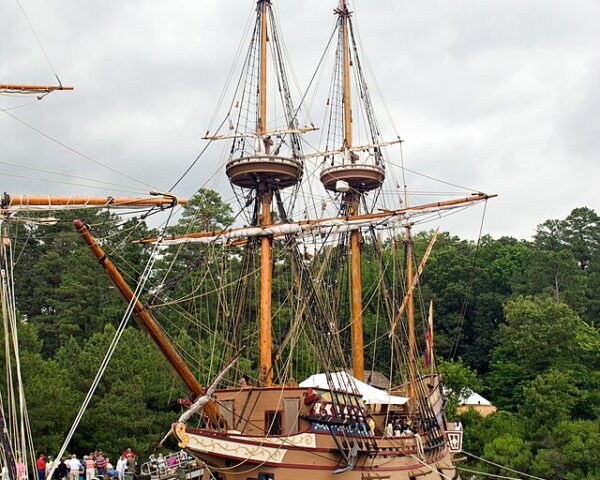On July 24, 1824, The Harrisburg Pennsylvanian, a local newspaper from the capital of Pennsylvania, changed poltical reporting forever. The newspaper conducted a survey in Wilmington, Delaware, asking their opinions on the presidential election due that November.
That year, President James Monroe decided to retire, leaving everyone in the country wondering who might be the next occupant of the White House after the upcoming election. The Pennsylvanian’s poll revealed military hero Andrew Jackson with a commanding 70 percent lead (335 votes) over Secretary of State John Quincy Adams (23 percent), Speaker of the House Henry Clay (four percent) and William Crawford (2 percent).
The newspaper’s forecast of the Jackson popular vote victory was “accurate if somewhat misleading,” writes Franklin and Marshall College. General Jackson “did go on to win the popular vote in the fall election, beating his closest opponent, Adams, by 77,000 votes. But as Al Gore can now attest, winning the most popular vote isn’t always enough in presidential elections. None of the candidates won a majority of electoral votes; hence the election was thrown into the
House of Representatives — where Jackson eventually lost to John Quincy Adams.”
According to The Museum of Australian Democracy at Old Parliament House, “before long, publications across the United States were running their own polls, or reporting on polls run by others. This kind of poll, known as a ‘straw poll’, was not very scientific, and their accuracy could vary considerably. Many of these polls were conducted by printing coupons or forms in the newspaper and inviting readers to send them back.
“Later in the 19th century, some efforts were made to make the polling more representative of the community. The Columbus Dispatch, for example, seems to have been the first to consider using trained interviewers to gather information, and sought a balance of age and occupation among those surveyed. Often, however, the opinions of civic leaders and elite members of society were canvassed as being more truly indicative of public thought.
Opinion polling became an institution in the United States, but took until the early 20th century to really catch on in other countries.”
While newspapers and journals continued for a century to survey Americans about what they thought about politics, the game completely changed in 1935. That’s when George Horace Gallup, an American pollster and statistician, revolutionized the field of public opinion polling by establishing the American Institute of Public Opinion, which we know today as the Gallup Organization.
One of the key innovations introduced by George Gallup was the concept of quota sampling, which he first employed in the late 1930s. Unlike the traditional method of conducting polls by randomly selecting respondents, quota sampling involves selecting participants from various demographic groups in proportion to their representation in the population. This method allowed Gallup to achieve more accurate and representative results, as it ensured that the sample reflected the diversity of the larger population.
The success of Gallup’s polling methodology became evident during the 1936 U.S. presidential election when his organization accurately predicted Franklin D. Roosevelt’s victory over Alf Landon. This groundbreaking achievement earned Gallup widespread recognition and cemented his reputation as a trailblazer in understanding public opinion.
In subsequent years, Gallup continued refining his polling techniques, experimenting with different question formats and exploring innovative data collection methods. He also recognized the importance of timing in polling, as current events and the changing political climate could influence the responses. Gallup’s ability to adapt his methods to changing circumstances allowed him to provide accurate and influential polling data consistently.
In the decades that followed, the Gallup method evolved in line with advancements in technology and communication. The introduction of telephone surveys in the 1970s expanded the reach of polling, allowing for quicker data collection and increased efficiency. As computer technology advanced, the Gallup Organization further improved its data analysis capabilities, providing more sophisticated insights into public opinions and attitudes.
Today, the Gallup method remains a cornerstone of public opinion research, with the Gallup Organization continuing to conduct polls on a wide range of topics, including politics, economics, social issues, and more. As one of the oldest and most respected polling organizations in the world, the legacy of George Gallup’s innovative polling techniques endures, shaping the way we understand and interpret public sentiment in a rapidly changing world.






